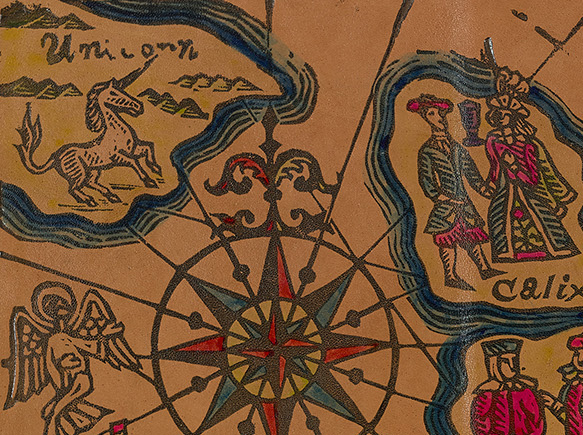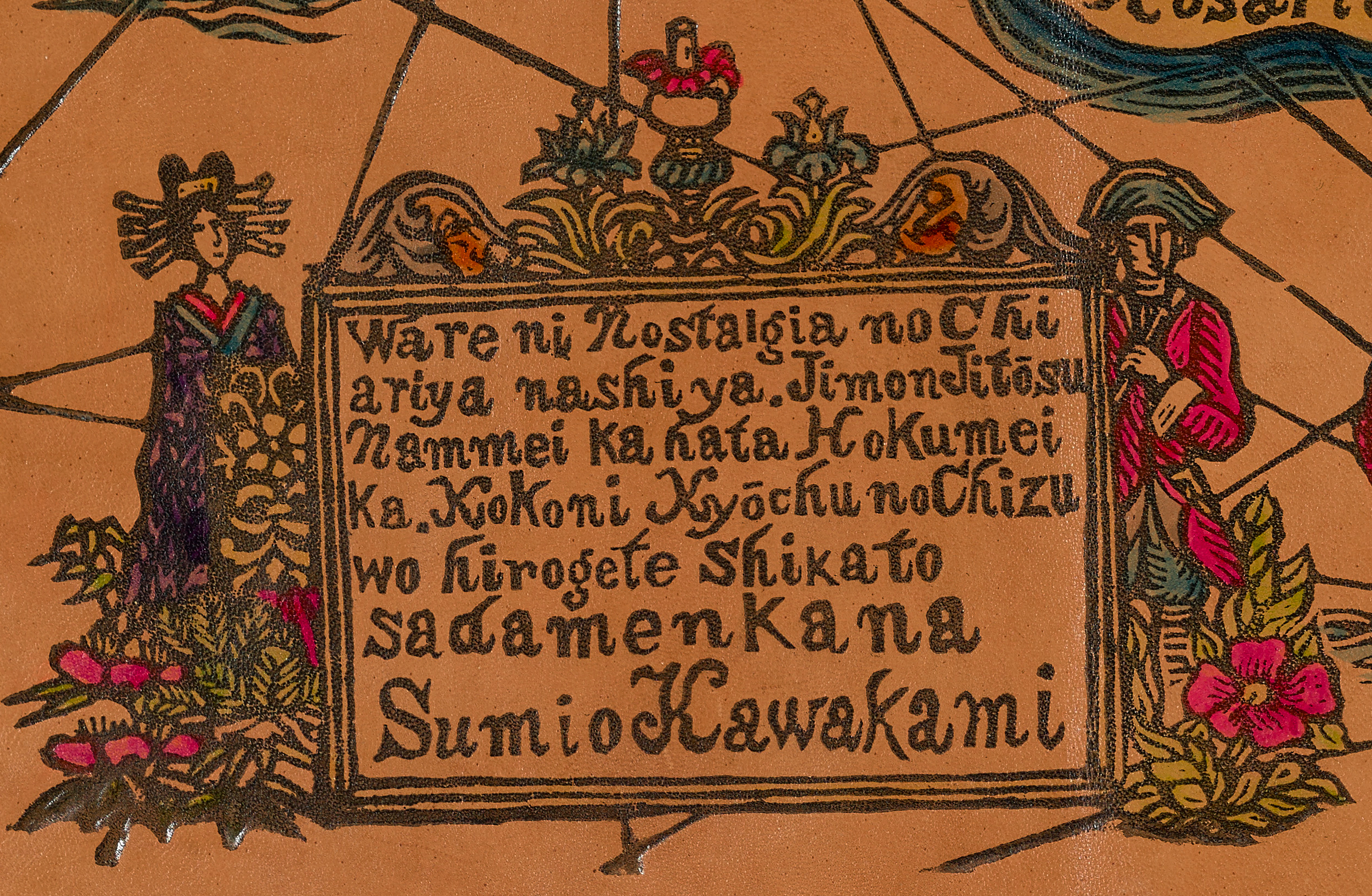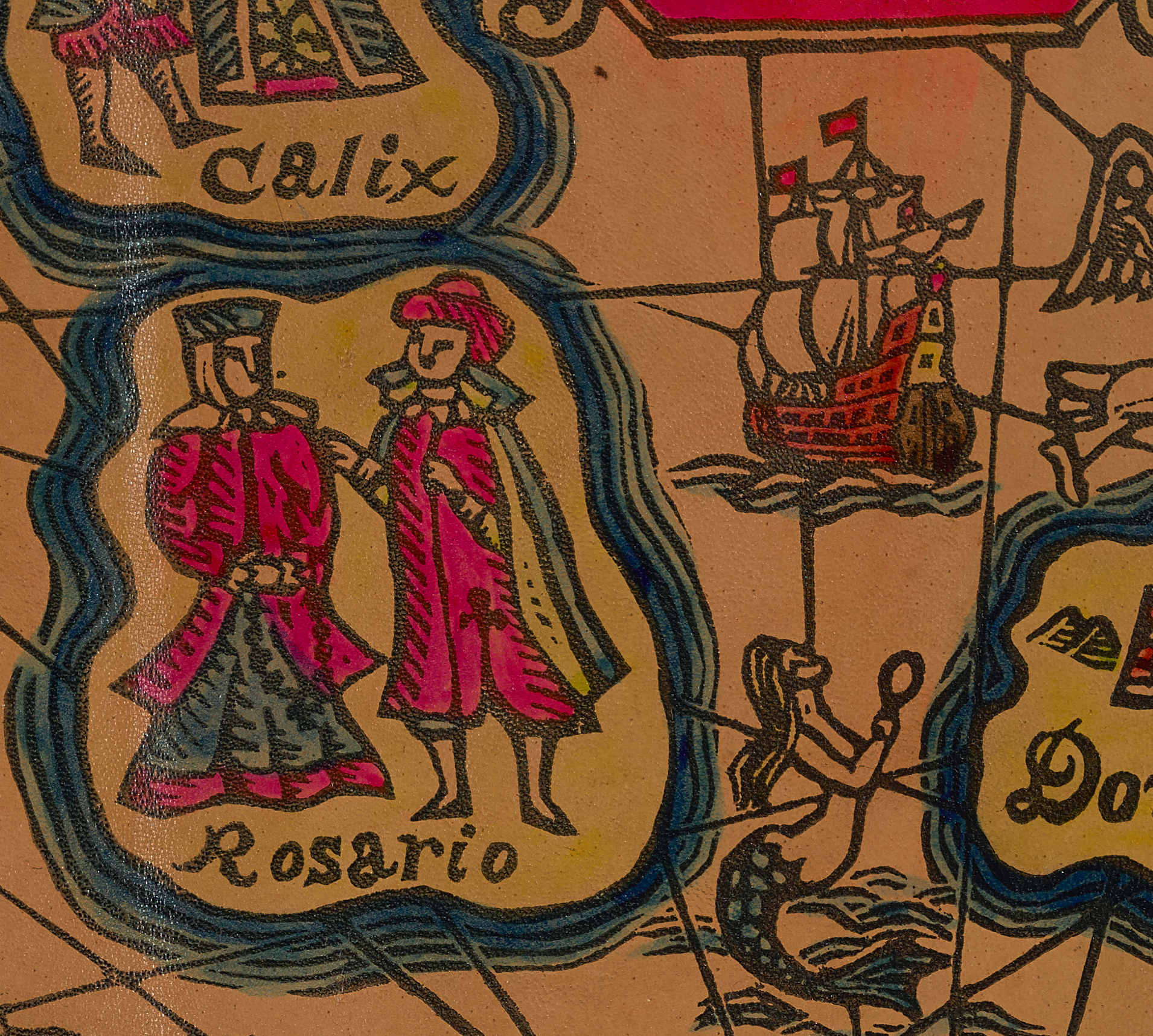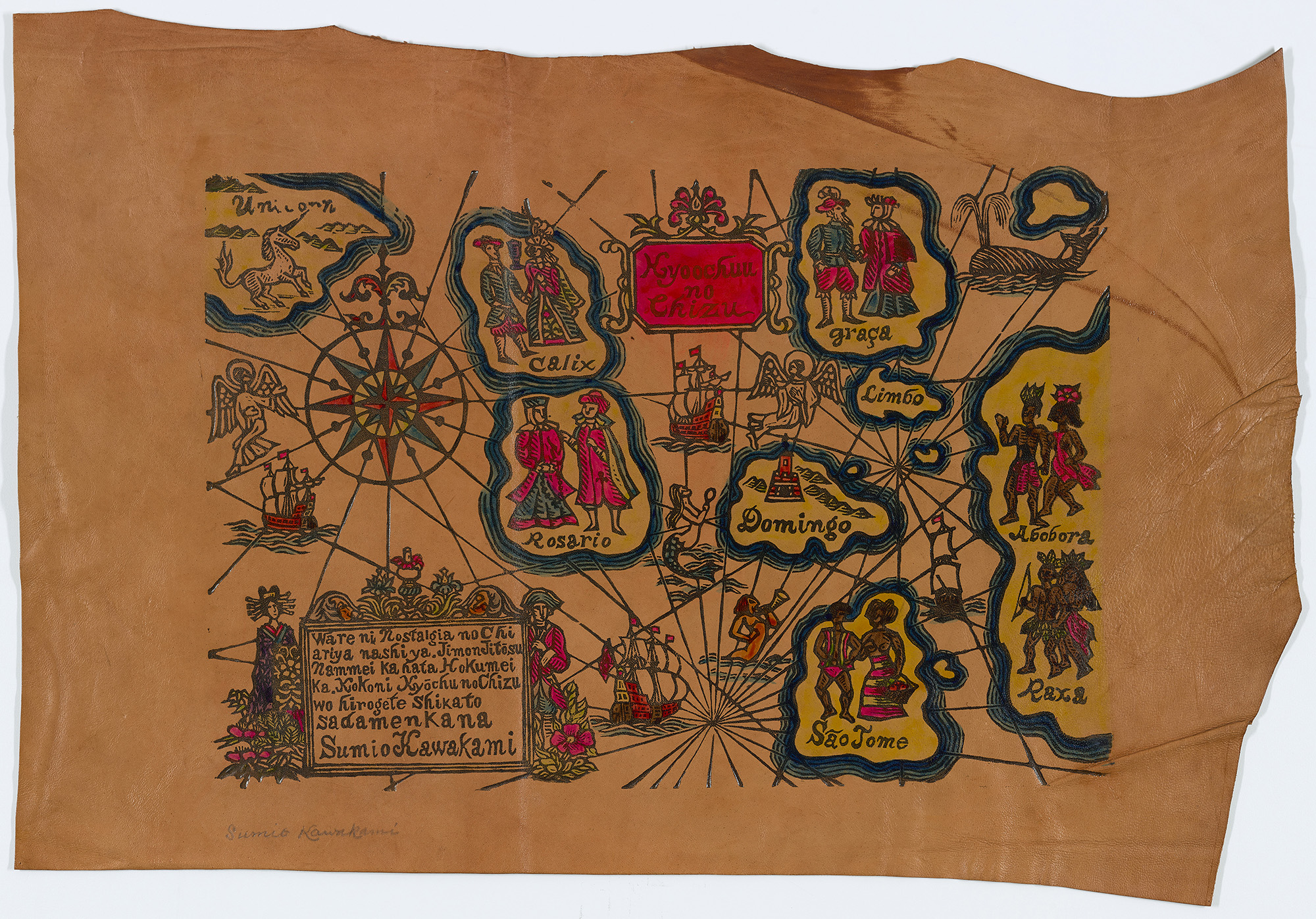Kawakami printed this map on imitation leather, an unusual material in the history of Japanese printmaking. This choice evokes the materiality of early modern European maps, which were commonly made from vellum, a type of processed animal skin. Kawakami also printed a version of this composition on paper (see S2019.3.932)

Kawakami liked to experiment with his materials, and he was known to make and mix his own pigments. The almost neon colors used here are a distinguishing feature of his work (see also S1995.118.4 or S2019.3.929). After printing the black outline, he applied colored inks by hand, a process that echoes the hand-drawn nature of the early modern European maps he references.

Imperialism and the search for new goods drove the European age of sea exploration. Nine land masses are included in Kawakami’s composition, several populated by a pair of people in seemingly native dress. One land is São Tomé, an island in the central African country of São Tomé and Príncipe that was colonized by the Portuguese in fifteenth century. The lands to the right are labeled Abobora (the Portuguese word for “pumpkin”) and Raxa (the Portuguese word for “wool”). The use of Portuguese to name, and thereby claim ownership of, these lands is an example of imperialist power and cultural erasure. The primacy given to those names for materials like wool and pumpkins over the native names of places and peoples reveals the human exploitation at the heart of the global trade that funded empires.
Despite these undertones in his map, Kawakami probably did not intend it to be an imperialist critique. However, imperialism was undoubtedly an important force in his life. During the artist’s formative decades, Japan was engaged in an aggressive campaign of imperialist expansion in East Asia and Russia, an era that Kawakami seems to have admired. He made this print around 1950, when Japan was occupied by the American military (1945–52) following its defeat in World War II.

Flanked by a woman in Japanese dress on one side and a man in Western military clothing on the other, this cartouche is filled with Romanized Japanese:
Ware ni nostalgia no chi ariya nashiya. Jimon jitōsu nanmei ka hata hokumei ka. Koko ni kyōchū no chizu wo hirogete shikato sadamenkana
Is this a land of nostalgia for me? I wonder to myself, could it be the southern ocean? A flag of the northern seas? Without clear definition, here the map of my mind unfolds.
(translated by Kit Brooks)
These open-ended questions suggest Kawakami was preoccupied with nostalgia. He grew up at the end of the Meiji period (1868–1912), a time of rapid social change as Japan imported Western-derived institutions, ideas, and technologies and transformed itself into a modern nation-state. His hometown of Yokohama had been developed as a center of foreign trade in the late 1850s, and its history as a site for the import of foreign goods may have ignited young Kawakami’s interest. He said,
With reference to my so-called exoticism, it is not oriented towards the West at all. Rather it is a nostalgia for the particular poetic feeling generated by the crazy mixed-up Meiji culture in which I felt secure.

One of Kawakami’s enduring interests was nanban, a genre of art that resulted from the sixteenth- and seventeenth-century encounters between Japan and the Portuguese. Nanban literally means “southern barbarian” and was used to refer to Europeans who approached Japan by ship from the south. Nanban art ranged from painted depictions of the arriving Portuguese and their trade goods (see F1965.22–23) to decorative objects that mixed European forms and iconography with Japanese materials (see F1979.50a–c). Map of My Mind is one of many examples of Kawakami’s use of nanban style and subject matter (see also S2019.3.932, S2019.3.928, S2019.3.935) to create a modern form of art that similarly mixed materials and ideas from different cultures.
